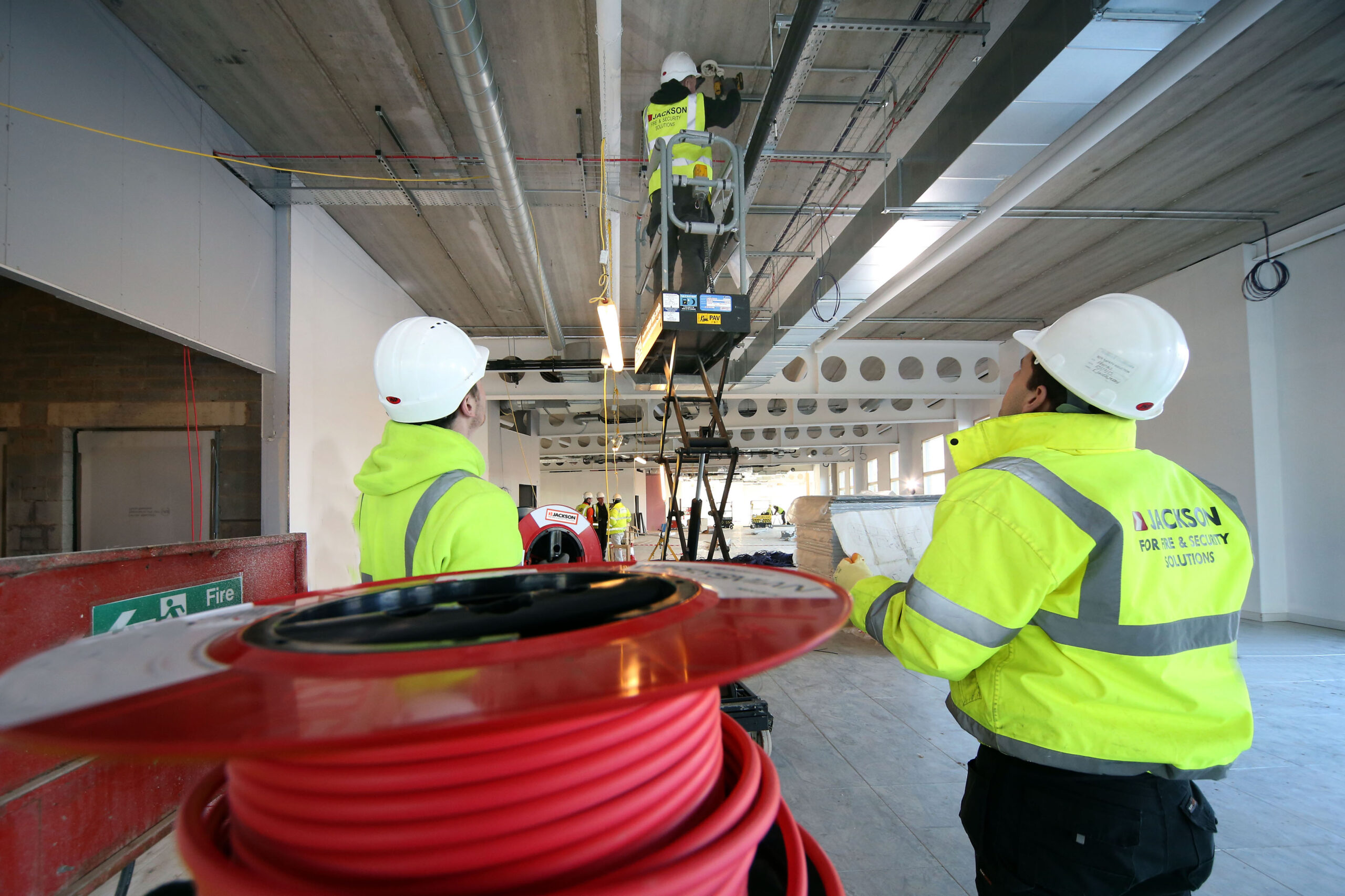While the quality of the wiring at home or in work isn’t something people tend to think about that much, the safety of it is vital. Wiring standards are of particular relevance to us, both from a fire risk perspective and also as fire alarm installers. Did you know you can’t connect a fire alarm to just any kind of wiring? Fire alarm cabling needs to be compliant with British Standards; otherwise if something happens within the cabling it could create a fault in the fire alarm. This could lead to all kinds of consequences, potentially coming back on the customer as an overall non-compliance and, more seriously, the alarm failing to function correctly in an emergency.
What are the cabling requirements when installing a fire alarm?
An installer needs to make sure you have the correct type of fire alarm cable for your building and circumstances. Basically, there are two grades of fire alarm cable that can be used: standard grade and enhanced grade. The choice of cable depends on how long it needs to operate for if a fire broke out.
In most cases, and in situations where a full building evacuation would be conducted immediately, the standard fire resistant cable is sufficient. The enhanced fire resistant cables are designed to be installed where communications must continue during a fire incident even when the building fabric’s been destroyed. For instance, it should be used in buildings where there might be a delayed evacuation situation or where people remain occupying part of the site, and the critical signal path passes through the area where the fire’s broken out. It should also be used where the fire plan involves the evacuation happening in four or more phases. Enhanced fire resistant cabling is also required in buildings that are higher than 30 metres. There will of course be other instances where a fire risk assessment identifies that it must be used.
There are many specific requirements in terms of the cable itself. For example, it should be coloured red but another colour can be used if it’s used consistently throughout and won’t be confused with other electrical services. There are a whole host of stipulations for the fire alarm installers to address to ensure the full integrity of the system. There are very stringent specifications in place about the way fire cabling should be used – for example, it mustn’t run close to high current power lines or lightning conductors and it needs to be segregated from all other services. The cable must be capable of handling the data and power of the system. Installers must check the standard of interconnections between devices and ensure the mains supply to the system is suitable.
The requirements extend beyond the cable itself too: any containment, cable ties, clips and other sundries used as part of the installation must all be metal. This is a relatively new requirement driven by the tragic deaths of two firefighters in 2010. Plastic trunking had melted in the fire they were fighting, resulting in the cables falling and hanging down from the ceiling. The two men became entangled in the fallen cables, were overcome by the excessive heat and lost their lives.
Don’t forget about your wiring at home
One final point: while we’ve concentrated mainly on fire alarm wiring, the standard of wiring in all buildings matters and that’s why we’re also taking the opportunity to remind you not to overlook the importance of wiring in home environments too. The recommended frequency for getting your domestic electrics checked is every ten years (five years in a rented home). So it’s worth adding it on to your list of New Year resolutions if you think your home might be due a check.
And if you’re thinking about having a fire alarm installed in your workplace but you’re not sure whether your wiring meets the British Standards, get in touch with us. We will carry out an inspection and testing of your wiring and if necessary replace it to ensure your installation fully meets the requirements of BS5839.
One complete fire and security solution
Need a local team to help with fire safety and security?
